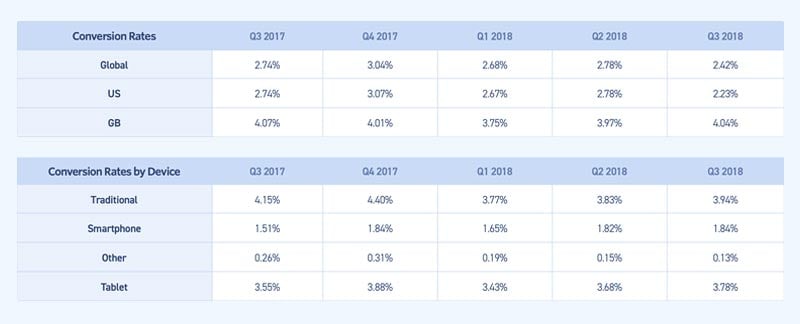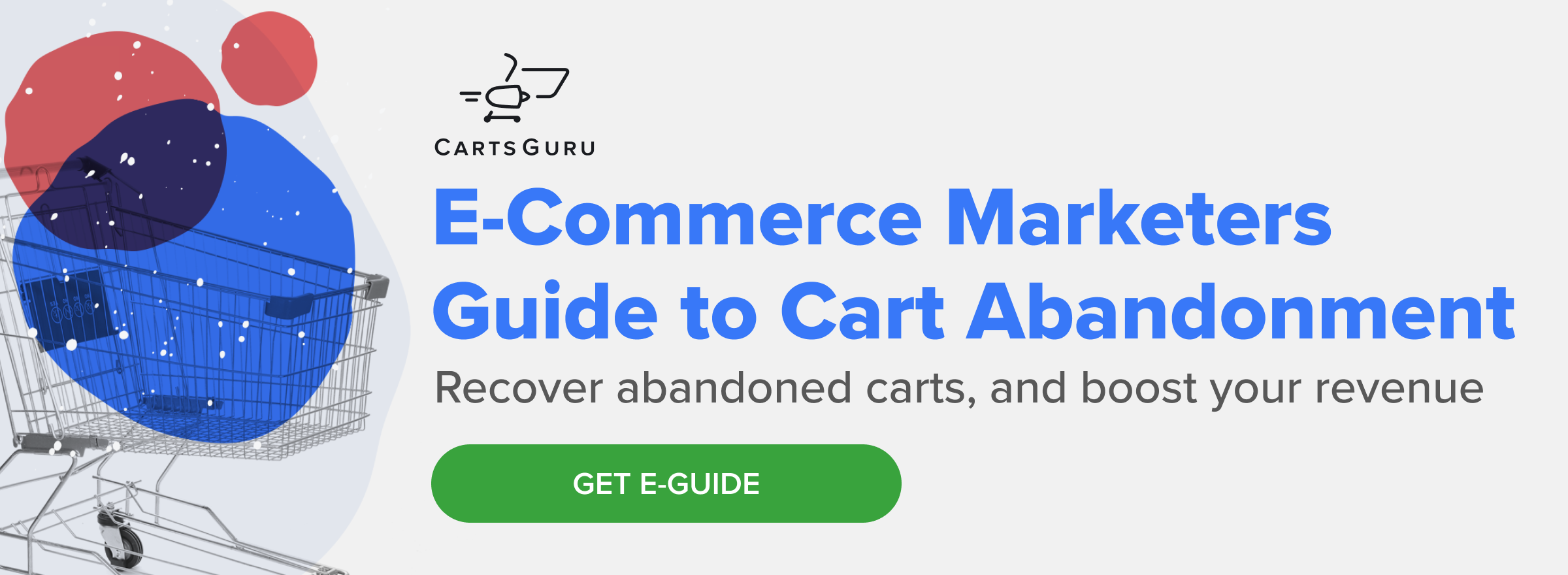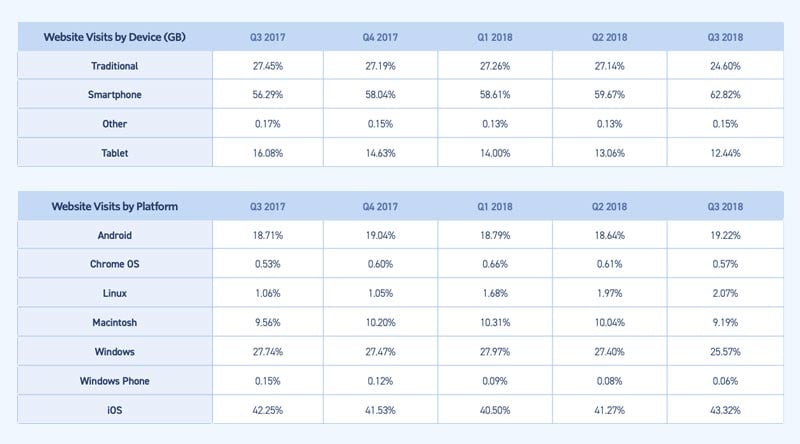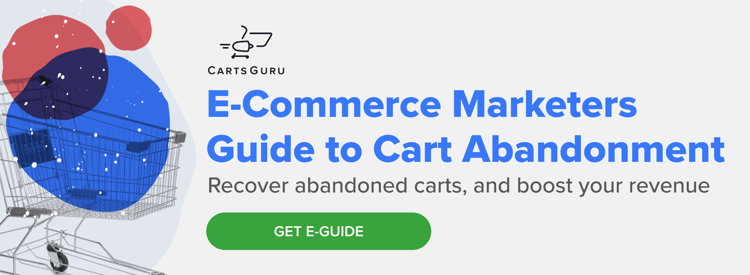
Competition is fierce within the ecommerce industry. For e-merchants to get ahead, they need to look for ways to improve constantly, and for this, data is a gold mine.
Marketers who regularly track the most important ecommerce metrics and make data-driven decisions do far better than those who leave it to guesswork.
Analysis of the right ecommerce metrics will help marketers supercharge their up-selling efforts, develop new products, improve customer experience and, ultimately, drive sales. But until marketers learn how to interpret data and turn it into actionable insights, it’s gold that hasn’t been pulled out of the ground yet.
To become a pro at data analytics, marketers first need to understand which e-commerce metrics they should be monitoring, then draw conclusions and start implementing solutions.
Here are the seven most important e-commerce metrics to track. Throughout this article, you’ll find out why each metric is important, how to analyze and interpret each data-point, and how to use this information to boost sales.
1. Ecommerce Conversion Rate
E-commerce conversion rate is the percentage of website visitors who become paying customers. Every ecommerce store should know their conversion rate and do everything possible to increase it.
This is how to calculate an e-commerce conversion rate:
Conversion rate = number of sales / total number of visitors x 100
Here's an example. Last month, you had 2,000 visits on your site, which resulted in 100 sales.
100 / 2000 (x 100) = 5% conversion rate
5% is a good overall benchmark, but aim high.
Conversion rates become more actionable when you go deeper and look at the conversion rate of specific products.
Product sales/product page visits x 100
Or by channel, such as email:
Number of sales/number of delivered emails x 100
Why this ecommerce metric matters:
The conversion rate of an e-commerce store is a vital e-commerce metric to track, as it gives an excellent overview of website performance.
Conversion rate is more applicable to e-commerce marketers when it’s broken down into macro and micro conversions.
The macro-conversion, which represents the primary objective of any e-commerce website, is when a customer completes a purchase by placing an order.
The sales funnel will also involve certain micro-conversions, which are important steps in the path towards the macro-conversion. These could be, for example, when a user clicks on a product, adds an item to their shopping cart, or clicks through to checkout.
Tracking these more specific metrics allows e-merchants to identify points where customers are dropping out along the sales cycle, ie. areas that need improvement. For example, if an e-merchant is losing a lot of customers at the add-to-cart stage, they may want to look into why that is. A simple on-page audit, followed by some testing, can identify what’s putting users off. It may be the quality of the image, the positioning of buttons, or the pricing that’s causing problems.
2. Customer Acquisition Cost
Another important e-commerce metric to measure, customer acquisition cost is the average amount an e-merchant spends to obtain a customer.
To calculate customer acquisition cost, divide the total customer acquisition cost over a certain period by the number of customers acquired in that period.
Customer acquisition cost = total marketing costs / total new purchases
Maybe you spent $1,500 in one month on things like web hosting, paid ads, content, design, etc. That same month, you acquired 120 new customers.
That gives you a customer acquisition cost of 1,500 / 120 = $12.5
Why this ecommerce metric matters:
Customer acquisition cost is an important e-commerce metric as it tells e-merchants how much their store currently spends on winning new customers. From there, e-merchants can work out if that money is well spent.
To gain valuable insight from this metric, calculate it by traffic source: divide the amount you spent advertising on one specific marketing channel by the number of customers who made a purchase on your website coming from that channel.
Compile an average number for each main channel to find out which are the most lucrative and which ones are a waste of time and money.
E-merchants can lower their overall CAC by prioritizing and investing in the channels that work best for them, finding sources of free traffic (social media, organic search, and email campaigns), and optimizing paid ads.
3. Average Order Value
Average order value is a self-explanatory ecommerce metric. Find average order value using the following calculation:
Average order value = total revenue / number of orders
Why this ecommerce metric matters:
Increasing average order value month on month is crucial to growing an e-commerce store. It’s up to every e-merchant to take action and incentivize customers to spend more on every purchase. Increase AOV by cross-selling, up-selling, offering bundles and discounts, giving out coupon codes or gift cards, and offering free shipping for orders over a certain amount.
Marketing automation platforms do a great job of increasing AOV by using a recommendation engine to share products that combine well - for example, books on a similar topic, or related sports equipment. This can encourage customers to add more to their basket before finalizing their order.
4. Customer Lifetime Value
Another important e-commerce metric to consider is how much your customers are worth throughout their lifetime, and encourage them to return again and again.
Extending your customer lifetime value means a better return on investment from customer acquisition and stable long-term e-commerce growth.
This metric will vary greatly depending on every e-merchant’s price point, and it's certainly a tricky one to work out.
E-merchants need to discover:
- Average purchase value (total revenue/number of orders)
- Purchase frequency (number of orders/unique customers)
- Customer value (average order value x purchase frequency)
- Customer average lifespan (time between first purchase to going dormant)
Then, do this calculation:
Customer Lifetime Value = Customer Value x Average Lifespan
Why this ecommerce metric matters
Calculating lifetime value metrics seems like hard work, but knowing how much the average customer spends in total in their ecommerce store will help e-merchants make better decisions about how much to spend on acquisition and retention.
Savvy e-merchants can then use this metric to identify VIP customers, enroll them in an exclusive VIP marketing list, and send deals and discounts to guarantee their business long-term.
5. Shopping Cart Abandonment Rate
Shopping cart abandonment is an all-too-common problem amongst e-merchants. The average shopping cart abandonment rate for e-commerce stores sits at about 68%, meaning that out of 100 shoppers who visit an online store and place items in their cart, only 32 actually make a purchase.
It’s complicated to track your own cart abandonment rate, so utilize a tool such as Google Analytics or a marketing automation software to save considerable time and effort.
Why this ecommerce metric matters:
Reducing cart abandonment rate to well below the accepted average is a great way to boost e-commerce profits and beat out other online retailers.
To do this, e-merchants first need to identify the visitors who abandoned carts, and what products they left in their carts. Immediately reach out to these visitors with retargeting emails or SMS prompting them to complete the purchase and recover as much as 20% percent of those lost sales.
E-merchants with an alarmingly high cart abandonment rate will have to do more than run retargeting campaigns. Look for the root cause of the problem. Why are your customers abandoning their carts?
Are they having issues navigating the checkout process? Look at making improvements to UX. Is shipping too slow or too expensive? Offer customers better options. Analyze the cart abandonment rate together with other metrics - such as conversions - to try and find the right solutions.
6. Website Searches
Digging into e-commerce site metrics to find out what customers like and dislike can help e-merchants create an amazing e-commerce experience. An optimized and user-friendly e-commerce store encourages customers to stick around, resulting in more sales.
The best place to find such data is in search bar queries. The data generated through a search bar tells e-merchants exactly what customers are searching for and whether that product is available or not.
Why this ecommerce metric matters:
There are two important things that e-merchants can learn from site searches. If customers are often searching for a product that isn’t stocked, consider adding it next season. Shopify gives users a report on “top online searches with no result” - have a read and use this data to fulfill unmet customer needs and to find ideas for in-demand products to sell.
Secondly, if the product that users are searching exists but users are struggling to find it, consider changing the name and the description of the product to match customer queries. In other words, the data will help e-merchants speak the same language as their customers.
7. Customer Retention Rate
Every e-merchant wants a high customer retention rate. It identifies the repeat customers who come back time and again and ensure steady e-commerce growth.
To find customer retention rate:
- Take the number of customers you had at the end of a given period
- Subtract new customers gained during that period
- Divide that by the number you started with, and times by 100
If you started 2019 with 500 customers. You ended the year with 800, and 400 of those were new customers.
800 - 400 = 400
400 / 500 = 0.8, x 100 = 80% retention rate
Why this ecommerce metric matters:
In the fickle world of e-commerce, it's tempting to focus on the metrics which are all about attracting new customers.
Nonetheless, delivering fantastic customer experiences that inspire brand loyalty can set an online store apart from the crowd.
Start tracking important ecommerce metrics today
All of these e-commerce metrics are closely intertwined. When you analyze each, understand how they relate to each other, and make data-driven decisions, that's when the magic happens.






